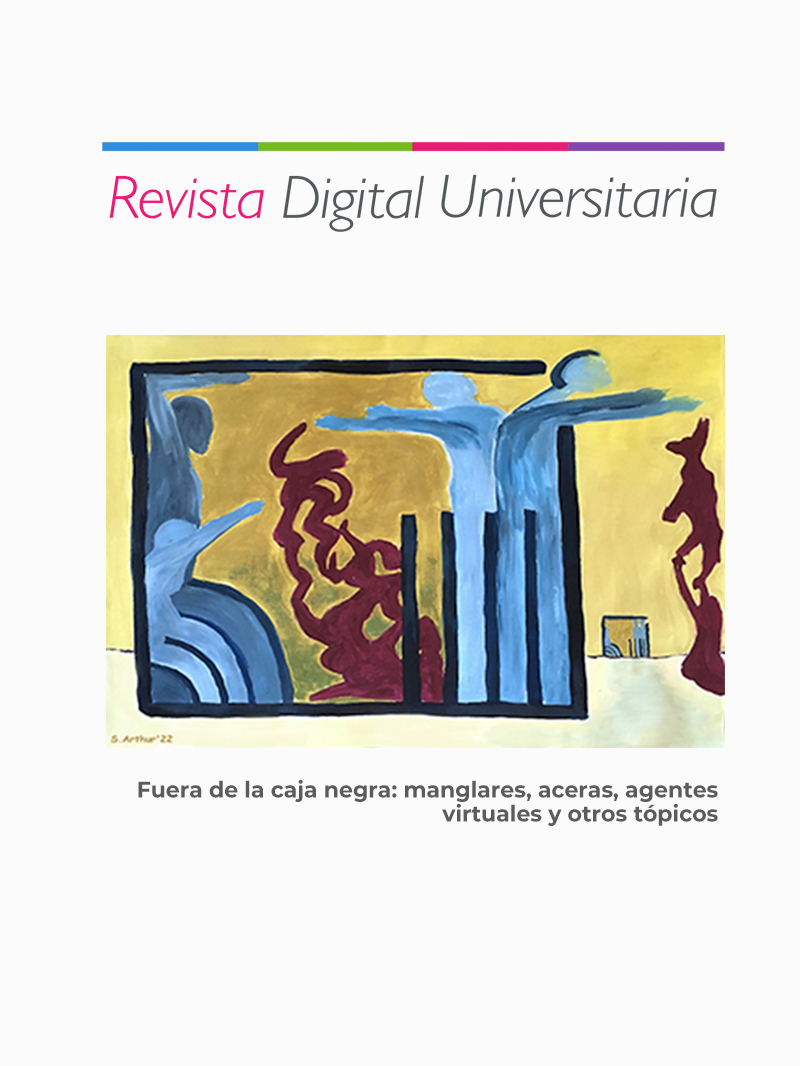¿Qué hay detrás del cáncer? Una mirada desde su origen hasta su tratamiento
DOI:
https://doi.org/10.22201/ceide.16076079e.2024.25.5.4Palabras clave:
cáncer, tumores, mitos, tratamientosResumen
El cáncer es una enfermedad que se produce cuando algunas células del cuerpo comienzan a dividirse sin control, hasta formar masas llamadas tumores. Actualmente se sabe que el cáncer ha existido en la tierra desde antes de que aparecieran los humanos y puede ser ocasionado por diferentes factores, ya sean genéticos, ambientales o ambos. Dependiendo del lugar donde el tumor se localice, hay diferentes tipos de cáncer. Saber más sobre esta enfermedad nos ayudará a cuidarnos para prevenirla o detectarla a tiempo y obtener el tratamiento adecuado. Únete a nosotros en esta fascinante y reveladora aventura sobre el cáncer, explorando su historia y desmintiendo algunos de los mitos más comunes acerca de esta enfermedad.
Acompáñanos a esta pequeña pero entretenida información sobre el cáncer, así como su historia y algunos mitos que existen acerca de esta enfermedad.
Citas
Academia Nacional de Medicina. (2022, mayo 26). Historia del cáncer y el cáncer en la historia [Video]. YouTube. https://www.youtube.com/watch?v=jYVBmUbKf_c
Chabner, B. A., y Longo, D. L. (2011). Cancer chemotherapy and biotherapy: Principles and practice (5.a ed.). Lippincott Williams & Wilkins.
Clinton, S. K., Giovannucci, E. L., y Hursting, S. D. (2020). The World Cancer Research Fund/American Institute for Cancer Research Third Expert Report on Diet, Nutrition, Physical Activity, and Cancer: Impact and Future Directions. The Journal Of Nutrition, 150(4), 663-671. https://doi.org/10.1093/jn/nxz268
DeVita, V. T., Lawrence, T. S., y Rosenberg, S. A. (Eds.). (2018). Cancer: Principles & Practice of Oncology (11.a ed.). Wolters Kluwer.
Instituto Nacional del Cáncer. (2023a). ¿Qué es el cáncer? https://www.cancer.gov/espanol/cancer/naturaleza/que-es
Instituto Nacional del Cáncer. (2023b). Common Cancer Myths and Misconceptions. https://www.cancer.gov/about-cancer/causes-prevention/risk/myths
Instituto Nacional del Cáncer. (s.f.). Oncología. En Diccionario de cáncer del nci. https://tinyurl.com/mry229yx
iarc Working Group on the Evaluation of Carcinogenic Risks to Humans. (2010). Some non-heterocyclic polycyclic aromatic hydrocarbons and some related exposures. iarc monographs on the evaluation of carcinogenic risks to humans.
Hajdu, S. I. (2011a). A note from history: Landmarks in history of cancer, part 1. Cancer, 117(5), 1097-1102. https://doi.org/10.1002/cncr.25553
Hajdu S. I. (2011b). A note from history: landmarks in history of cancer, part 2. Cancer, 117(12), 2811-2820. https://doi.org/10.1002/cncr.25825
Hausman, D. M. (2019). What Is Cancer? Perspectives in Biology and Medicine, 62(4), 778-784. https://doi.org/10.1353/pbm.2019.0046
Lewandowska, A. M., Rudzki, M., Rudzki, S., Lewandowski, T., y Laskowska, B. (2019). Environmental risk factors for cancer - review paper. Annals of agricultural and environmental medicine : aaem, 26(1), 1–7. https://doi.org/10.26444/aaem/94299
Lipsick, J. (2021). A History of Cancer Research: Carcinogens and Mutagens. Cold Spring Harbor Perspectives in Medicine, 11(3), a035857. https://doi.org/10.1101/cshperspect.a035857
López, M. M. y Cardona, A. F. (2021). Historia del cáncer y el cáncer en la historia. Medicina, 42(4), 528-562. https://doi.org/10.56050/01205498.1559
Lushniak, B. D., Samet, J. M., Pechacek, T. F., Norman, L. A., Taylor, P. A., United States Public Health Service, Office of the Surgeon General, National Center for Chronic Disease Prevention and Health Promotion, Office on Smoking and Health. (2014). The Health consequences of smoking—50 years of progress: a report of the Surgeon General. https://stacks.cdc.gov/view/cdc/21569
Newman, D. J., y Cragg, G. M. (2016). Natural Products as Sources of New Drugs from 1981 to 2014. Journal of natural products, 79(3), 629-661. https://doi.org/10.1021/acs.jnatprod.5b01055
Pott, P. (1775). Chirurgical Observations Relative to the Cataract, the Polypus of the Nose, the Cancer of the Scrotum, the Different Kinds of Ruptures, and the Mortification of the Toes and Feet. Hawes, Clarke, and Collins. https://wellcomecollection.org/works/pvdd4yrv
Romero Romero, L., y Patiño González, V. E. (2021). ¿Qué es el cáncer? RA RIÓ GUENDARUYUBI, 5(13), 6-22. https://doi.org/10.53331/rar.v5i13.2041
Spector, L. G., Pankratz, N., y Marcotte, E. L. (2015). Genetic and nongenetic risk factors for childhood cancer. Pediatric clinics of North America, 62(1), 11–25. https://doi.org/10.1016/j.pcl.2014.09.013
Sun, Y. S., Zhao, Z., Yang, Z. N., Xu, F., Lu, H. J., Zhu, Z. Y., Shi, W., Jiang, J., Yao, P. P., y Zhu, H. P. (2017). Risk Factors and Preventions of Breast Cancer. International journal of biological sciences, 13(11), 1387-1397. https://doi.org/10.7150/ijbs.21635
Vineis, P., y Wild, C. P. (2014). Global cancer patterns: causes and prevention. Lancet, 383(9916), 549-557. https://doi.org/10.1016/S0140-6736(13)62224-2
World Health Organization (WHO). (2012). Globally, 1 in 6 Cancers Due to Preventable Infections. Press Release No. 213. Disponible online: https://www.cancer.org/cancer/understanding-cancer/what-is-cancer.html
Yoshida R. (2021). Hereditary breast and ovarian cancer (hboc): review of its molecular characteristics, screening, treatment, and prognosis. Breast cancer (Tokyo, Japan), 28(6), 1167–1180. https://doi.org/10.1007/s12282-020-01148-2
Publicado
Número
Sección
Licencia
Derechos de autor 2024 Revista Digital Universitaria

Esta obra está bajo una licencia internacional Creative Commons Atribución-NoComercial-CompartirIgual 4.0.

Revista Digital Universitaria es editada por la Universidad Nacional Autónoma de México se distribuye bajo una Licencia Creative Commons Atribución-NoComercial 4.0 Internacional. Basada en una obra en http://revista.unam.mx/.










